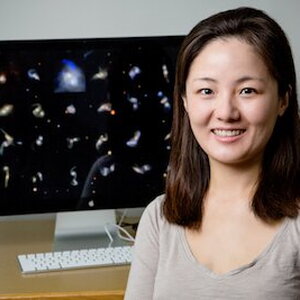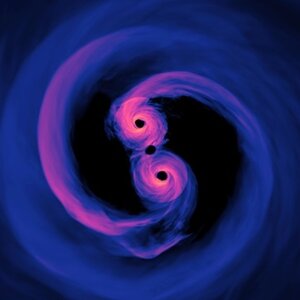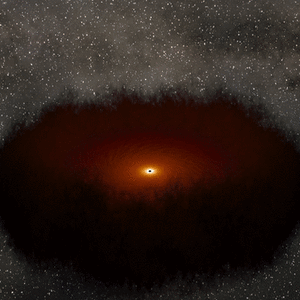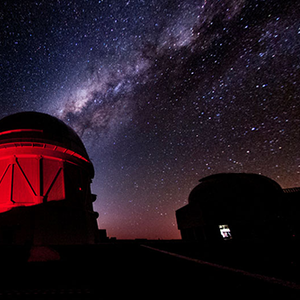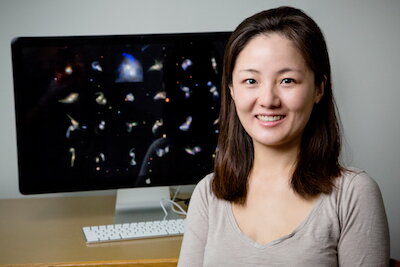
Contact Information
1002 W. Green St.
Urbana, IL
Biography
Prof. Xin Liu received her B.S. in Physics from Tsinghua University in 2004 and her Ph.D in Astrophysical Sciences from Princeton University in 2010 under the guidance of Prof. Michael A. Strauss. Before joining UIUC in 2015, she was a NASA Einstein Fellow at Harvard and a Hubble Fellow at UCLA.
Research Interests
Astronomical survey and data science
Multi-messenger and time-domain astrophysics
AI for science
Research Description
Astronomy has always been driven by data. Yet only in recent years has it truly become a big data field. With automatic surveys recording the sky at unprecedented speed, the sheer volume of astronomical data introduces new challenges and opportunities. Modern Astronomy pushes the boundaries of data analysis and artificial intelligence, providing a great domain for machine learning (ML) research. The discipline is entering a phase of maturation, progressing beyond the simplistic utilization of pre-packaged, opaque ML models and evolving towards methodologies where ML plays an essential role within a broader, principled analysis framework. Our current research is focused on three evolving domains where the intersection of ML and astronomy forms symbiosis: (1) Physics-informed learning, (2) Statistical learning with probabilistic frameworks, offering capabilities such as uncertainty quantification and generative models, and (3) Transparent and interpretable ML models for scientific analyses, emphasizing robustness, accuracy, and comprehensibility.
Education
Ph.D., Astrophysical Sciences, Princeton University, 2010
M.A., Astrophysical Sciences, Princeton University, 2008
M.S., Physics, Tsinghua University, 2006
B.S., Physics, Tsinghua University, 2004
Courses Taught
Additional Campus Affiliations
Associate Professor, National Center for Supercomputing Applications (NCSA)
External Links
Honors & Awards
Norman P. Jones Professorial Scholar, 2023-2026
Excellent Teacher Ranked by Students, 2023
NCSA Faculty Fellow, 2020 & 2023
Recent Publications
Ishikawa, Y., Zakamska, N. L., Shen, Y., Liu, X., Chen, Y. C., Hwang, H. C., Vayner, A., Rupke, D. S. N., Veilleux, S., Wylezalek, D., Gross, A. C., Sankar, S., & Diachenko, N. (2025). VODKA-JWST: Synchronized Growth of Two Supermassive Black Holes in a Massive Gas Disk? A 3.8 kpc Separation Dual Quasar at Cosmic Noon with the NIRSpec Integral Field Unit. Astrophysical Journal, 982(1), Article 22. https://doi.org/10.3847/1538-4357/adb4ee
Luo, D., Jiang, N., & Liu, X. (2025). A Systematic Search for Candidate Supermassive Black Hole Binaries Using Periodic Mid-infrared Light Curves of Active Galactic Nuclei. Astrophysical Journal, 978(1), Article 86. https://doi.org/10.3847/1538-4357/ad9245
Burke, C. J., Liu, Y., Ward, C. A., Liu, X., Natarajan, P., & Greene, J. E. (2024). DAVOS: Dwarf Active Galactic Nuclei from Variability for the Origins of Seeds: Properties of Variability-selected Active Galactic Nuclei in the COSMOS Field and Expectations for the Rubin Observatory. Astrophysical Journal, 971(2), Article 140. https://doi.org/10.3847/1538-4357/ad54ca
Burke, C. J., Liu, X., & Shen, Y. (2024). Gemini near-infrared spectroscopy of high-redshift Fermi Blazars: Jetted Black Holes in the early universe were overly massive. Monthly Notices of the Royal Astronomical Society, 527(3), 5356-5365. Article stad3592. https://doi.org/10.1093/mnras/stad3592
Chen, Y. C., Ishikawa, Y., Zakamska, N. L., Liu, X., Shen, Y., Hwang, H. C., Rupke, D., Vayner, A., Gross, A. C., Liu, W., Wylezalek, D., Veilleux, S., Bertemes, C., Diachenko, N., & Sankar, S. (2024). VODKA-JWST: A 3.8 kpc Dual Quasar at Cosmic Noon in a Powerful Starburst Galaxy with JWST/MIRI Integral Field Unit. Astrophysical Journal, 968(2), Article 92. https://doi.org/10.3847/1538-4357/ad4798
